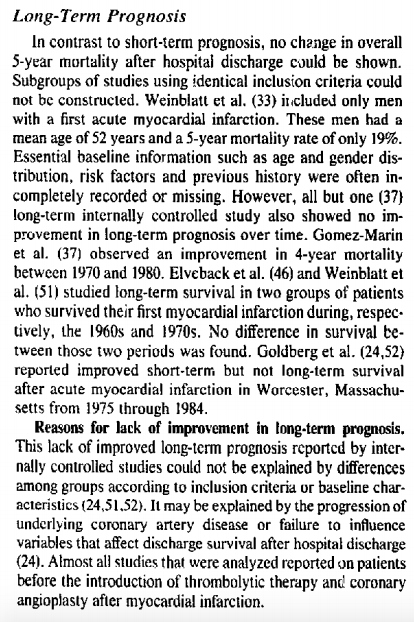I& #39;m staunchly anti-spoiler but I want to tweet something about cardiology and Mad Men, which is a show that premiered 13 years ago, so if you haven& #39;t gotten around to it yet, stop reading this thread.
Okay, spoilers herein:
It has always bothered me that Roger has an acute MI in 1960 and then survives—drinking and smoking heavily to boot—through to 1971. There were basically no effective treatments at the time, so I& #39;ve always assumed this was a bit of unrealistic TV magic.
It has always bothered me that Roger has an acute MI in 1960 and then survives—drinking and smoking heavily to boot—through to 1971. There were basically no effective treatments at the time, so I& #39;ve always assumed this was a bit of unrealistic TV magic.
~But what do the data show?~
In 1991, a research group helmed by Hein Wellens (yes, THAT Wellens) had essentially the same question.
They found that among the included studies performed in the 1960s, average in-hospital mortality was 29%. The average 5-year mortality rate after discharge was 33%. So overall 5-year overall mortality after AMI in the 1960s was 29+33=62%, right?
No...
No...
Patients who died in-hospital are excluded from the 5-year post-discharge mortality rate, so a better estimate for overall 5-year mortality is 1-((1-0.29)*(1-0.33))=52%
(You can think of this as 1-likelihood of NOT dying in the hospital AND NOT dying in the first 5 years)
(You can think of this as 1-likelihood of NOT dying in the hospital AND NOT dying in the first 5 years)
As a non-Mad Men-related aside, it& #39;s pretty humbling that this paper finds no improvement in longterm survival after AMI from the 1960s to the 1980s. The authors note that almost all the studies reported on patient outcomes prior to the era of lytics and angioplasty.

 Read on Twitter
Read on Twitter





